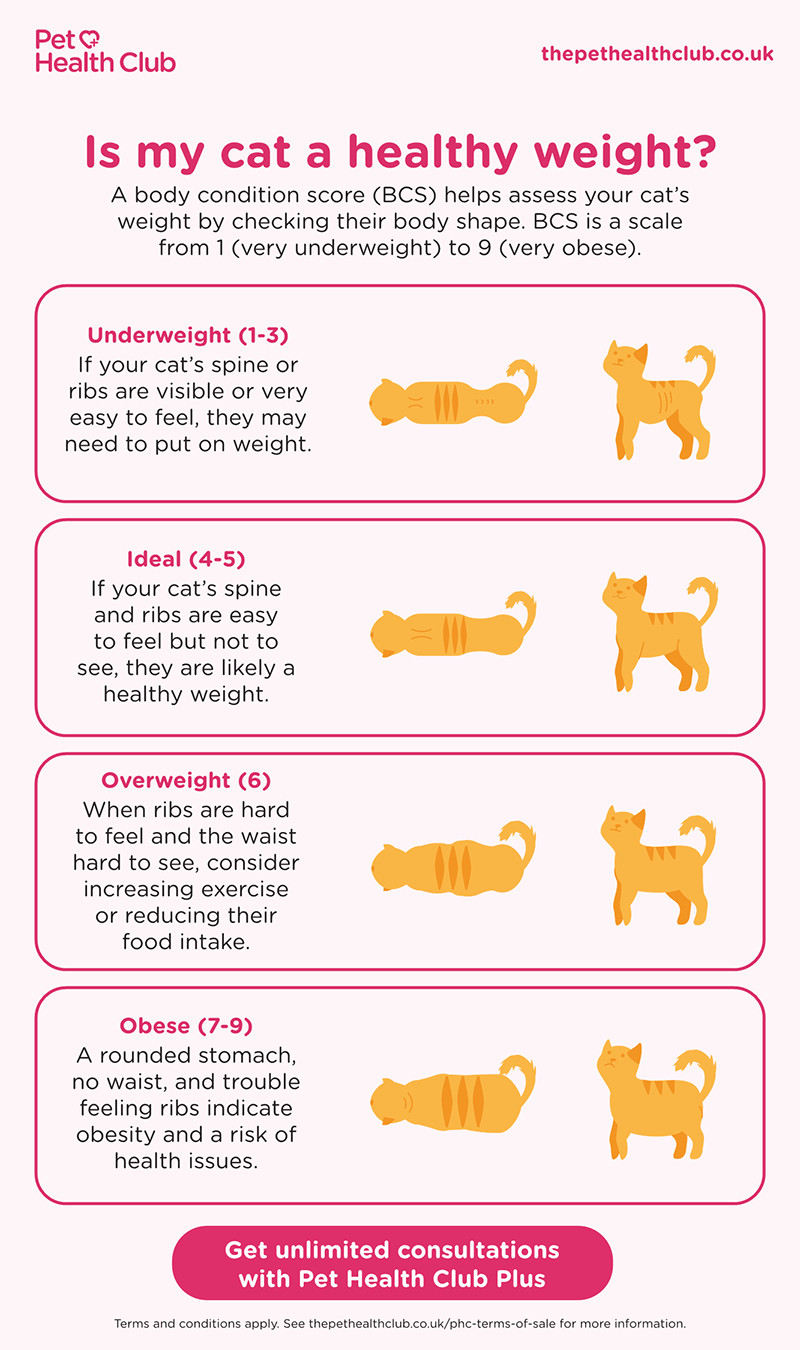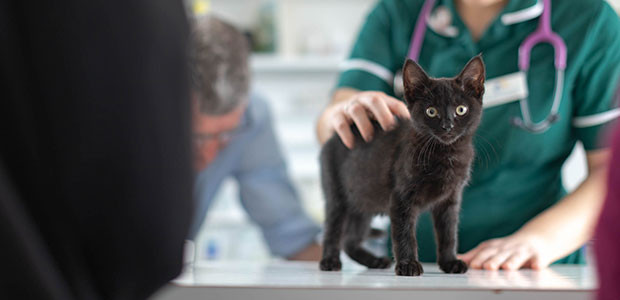Maintaining a healthy weight is crucial for your cat’s overall well-being and longevity. Just like humans, cats can suffer from various health issues if they are overweight or underweight. Understanding what constitutes a healthy weight for your cat is the first step in ensuring they live a happy and active life. While the ideal weight can vary depending on breed and size, a Cat Weight Table provides a helpful guideline.
Decoding the Ideal Cat Weight: Breed Matters
Generally, a domestic cat should weigh between 8 to 10 pounds (3.6 to 4.5 kg). However, this is just an average. Certain breeds naturally tend to be larger or smaller. For instance, the majestic Maine Coon can tip the scales at 25 pounds (11 kg) or even more, while a petite breed like the Siamese might weigh as little as 5 pounds (2.2 kg). Therefore, relying solely on a general weight range might not be accurate for your specific feline companion. A cat weight table that breaks down weight ranges by breed offers a more tailored and precise approach.
Here’s a cat weight table providing average healthy weight ranges for some popular cat breeds:
| Cat Breed | Female Weight | Male Weight |
|---|---|---|
| Domestic Shorthair/Longhair | 8-10lb / 3.6-4.5kg | 8-10 lb / 3.6-4.5kg |
| Himalayan | 7-12lb / 3.2-5.4kg | 7-12 lb / 3.2-5.4kg |
| Maine Coon | 10-15lb / 4.5-6.8kg | 15-25lb / 6.8-11.3kg |
| Persian | 7-12lb / 3.2-5.4kg | 7-12lb / 3.2-5.4kg |
| Siamese | 7-10lb / 3.2-4.5kg | 7-10lb / 3.2-4.5kg |
Read more: Cat diet advice: what’s the best food to give my kitten or cat?
The Importance of a Healthy Cat Weight
Why is maintaining your cat at a healthy weight so vital? Just like in humans, excess weight in cats can lead to a cascade of health problems. Obesity significantly increases the risk of conditions such as:
- Diabetes: Overweight cats are much more prone to developing diabetes, which requires ongoing management and can impact their quality of life.
- Arthritis and Joint Problems: Extra weight puts excessive strain on joints, leading to pain, inflammation, and reduced mobility.
- Pancreatitis: High-fat diets, often associated with obesity, can trigger pancreatitis, a painful and potentially serious inflammation of the pancreas.
- Skin Issues: Overweight cats may have difficulty grooming themselves properly, leading to skin infections and sores.
- Reduced Lifespan: Studies have shown that overweight cats tend to have shorter lifespans compared to cats maintained at a healthy weight.
By proactively managing your cat’s weight, you are taking a significant step in preventing these health issues and ensuring they enjoy a longer, healthier, and more comfortable life.
How to Assess Your Cat’s Weight at Home
Besides using a cat weight table, you can perform simple checks at home to gauge if your cat is within a healthy weight range. These hands-on assessments, combined with visual cues, can provide valuable insights:
- Rib Check: Gently run your fingers along your cat’s side. You should be able to feel their ribs easily with a slight fat covering. If you can’t feel the ribs or there’s a thick layer of fat, your cat is likely overweight. Conversely, if the ribs are very prominent and easily felt with no fat covering, your cat might be underweight.
- Spine and Shoulder Bones: Similar to the rib check, you should be able to feel your cat’s spine and shoulder bones without pressing hard, indicating a healthy weight. If these bones are excessively protruding, it could be a sign of being underweight.
- Visual Assessment: Observe your cat’s body shape from above and from the side. A healthy cat should have a visible waist when viewed from above, and a slight abdominal tuck when viewed from the side. An overweight cat may have a rounded or sagging belly, lacking a defined waist.
If you are unsure about your cat’s weight after these checks, consult a cat body shape chart for a visual comparison.
Utilizing a Cat Body Shape Chart
A cat body shape chart, also known as a body condition score chart, offers a visual guide to assess your cat’s weight. These charts typically use a scoring system, often from 1 to 9, with 4-5 representing an ideal body condition.
 Cat Weight Chart, helping owners tell if their cat is overweight.
Cat Weight Chart, helping owners tell if their cat is overweight.
As you can see in this cat body shape chart, a score of 4 or 5 indicates a healthy weight where you can feel the ribs, spine, and hip bones, and the cat exhibits a visible waist and abdominal tuck. Charts like these provide a clear visual benchmark to help you determine if your cat is at a healthy weight, overweight, or underweight.
Read more: Cat vaccinations: keeping your kitten healthy and happy
Strategies for Achieving a Healthy Weight
If you determine that your cat is overweight based on the cat weight table, physical checks, or a body shape chart, don’t worry! There are effective strategies to help them reach a healthier weight:
- Dietary Adjustments: Reduce treats and eliminate table scraps or human food, which are often high in calories and unhealthy for cats. Ensure you are feeding your cat a high-quality cat food appropriate for their age and life stage. Consider switching to a weight management formula if your vet recommends it. For senior or neutered cats, specialized diets can also aid in calorie control.
- Portion Control: Precisely measure your cat’s food portions according to the feeding guidelines on the food packaging and your vet’s recommendations. Avoid free-feeding, where food is available at all times, as this can easily lead to overeating.
- Gradual Diet Changes: When switching cat foods, introduce the new food gradually over 7-10 days to avoid digestive upset.
- Exercise and Enrichment: Increase your cat’s physical activity through interactive play sessions. Use toys that encourage movement, such as feather wands or laser pointers. Puzzle feeders can also be beneficial, making your cat work for their food, increasing activity levels and mental stimulation.
 black cat in practice for article on average cat weight
black cat in practice for article on average cat weight
Seeking Professional Veterinary Advice
While cat weight tables and home assessments are helpful tools, consulting with your veterinarian is paramount for personalized advice. Your vet can perform a thorough weight check, assess your cat’s overall health, and rule out any underlying medical conditions contributing to weight issues. They can also provide tailored recommendations for diet, exercise, and weight management strategies specific to your cat’s breed, age, lifestyle, and health status.
Maintaining a healthy weight is an ongoing commitment to your cat’s well-being. By utilizing a cat weight table as a guide, regularly monitoring their body condition, and seeking professional veterinary guidance, you can help your feline friend thrive and enjoy a long and healthy life. Don’t hesitate to reach out to your local vet for a weight check and personalized advice to ensure your cat is at their optimal weight. You can easily find a vet near you by using a Find a Vet page or even consult with a vet online through an online vets service for initial guidance and support.


